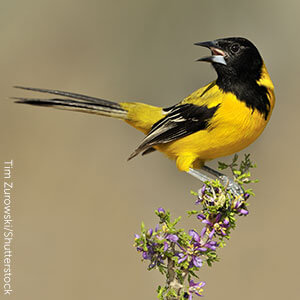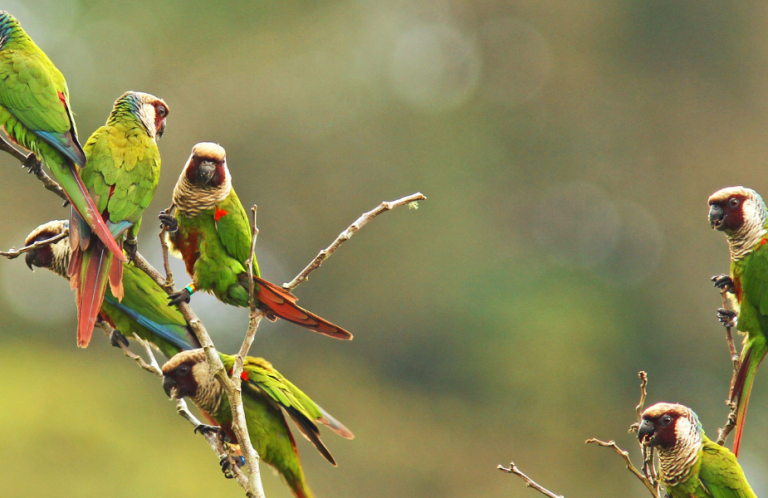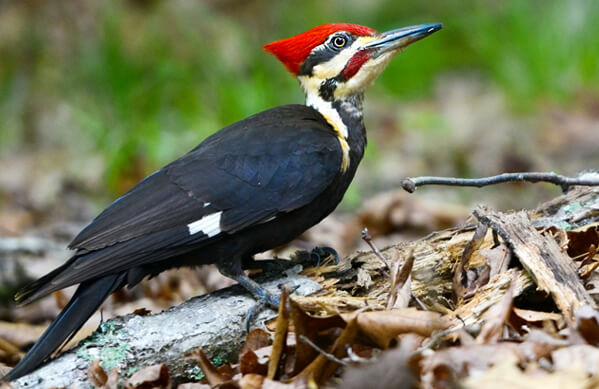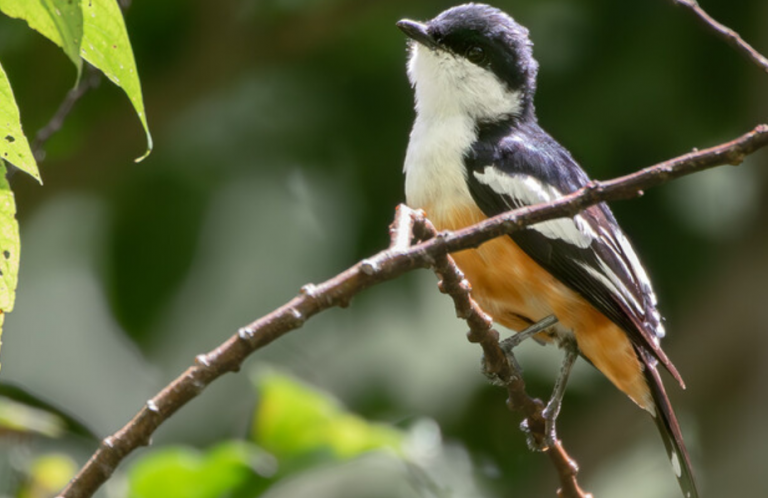Excluding seldom-seen vagrant species, eight New World oriole species occur in the United States (see list below). Thanks to their distinctive orange-and-black or yellow-and-black plumage, orioles are fairly easy to identify. And because they inhabit large portions of the country — and occasionally visit feeders — many Americans are familiar with these colorful birds.
Despite their relative abundance, most North American orioles are in decline, some steeply. The Baltimore Oriole, for example, has experienced a 42-percent population decline in the last 50 years; the Audubon's Oriole has been added to Partners in Flight's (PIF's) Yellow Watch List (an indicator of conservation concern); and the Altamira Oriole, which numbers fewer than 500 in Texas, has been listed as “threatened” in the state by the Texas Organization for Endangered Species.
Oriole losses have been driven by a range of factors, including habitat loss, pesticide use, collisions, and brood parasitism — raising cowbirds' offspring, often to the detriment of their own. To reverse these declines, American Bird Conservancy has successfully advocated for the cancellation of pesticides shown to kill orioles and other birds. We promote bird-friendly building practices to reduce glass collisions. And, as part of our full annual life-cycle strategy, we collaborate with local landowners and nonprofits in Latin America to protect important wintering habitat for orioles.
Our List of U.S. Orioles
The alphabetical list below includes all orioles, both migratory and resident, that breed regularly in the continental United States. The PIF population and conservation data we use is exclusive to the United States and Canada. (Note that only three listed species reach Canada: Baltimore, Bullock's, and Orchard.) As a result, population estimates shown here do not reflect total numbers for orioles with parts of their breeding ranges in Mexico and Central America. We have included one exotic species on our list, the Spot-breasted Oriole, which has been established in the U.S. for more than 70 years, and we have omitted several vagrant species that rarely visit.
Altamira Oriole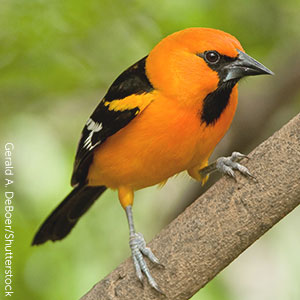
U.S. Population Estimate: <500
Population Trend: Unknown
Habitat: Dry forest and brush near Rio Grande
Threats: Habitat loss
Note: Although most of the Altamira Oriole's range lies south of the U.S. border, it can be found in the Lower Rio Grande Valley of Texas. The Texas Organization for Endangered Species lists the species as “threatened” within the state; however, the Altamira Oriole is still considered common in the southern parts of its range. |
U.S. Population Estimate: <5,000
Population Trend: Overall trend unknown; decreasing in the U.S.
Habitat: Dry forest and brush
Threats: Brood parasitism, habitat loss and fragmentation
Note: Formerly known as the Black-headed Oriole, Audubon's Oriole is the only oriole species in the New World to sport a black hood with a yellow or orange back. Conservation concerns have led PIF to add Audubon's Oriole to its Yellow Watch List. |
U.S./Canada Population Estimate: 12,000,000
Population Trend: Decreasing
Habitat: Open eastern deciduous forest
Threats: Habitat loss
Note: Like most oriole species, Baltimore Orioles build hanging nests by weaving an assortment of fibers, including hairs and grasses. The nests, which take one to two weeks to construct, are lined with feathers and downy fibers. Baltimore Oriole populations have decreased by 42 percent over the last 50 years. |
Bullock's Oriole U.S./Canada Population Estimate: 6,500,000
Population Trend: Decreasing
Habitat: Open western deciduous forest
Threats: Habitat loss, possibly pesticide use
Note: Bullock's Oriole enjoy a varied diet, including insects, fruit, and even nectar from agaves and other flowers. They can occasionally be found sipping from hummingbird feeders. Populations of the Bullock's Oriole have decreased 22 percent over the last 50 years. |
Hooded Oriole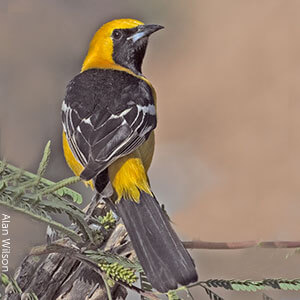 U.S. Population Estimate: 350,000
Population Trend: Increasing
Habitat: Open woods and brush
Threats: Localized brood parasitism by Brown-headed and Bronzed Cowbirds
Note: Hooded Orioles, which tend to nest in palm trees, have expanded their range northward, following the introduction of ornamental palms in residential areas. They can now be found as far north as Arcata, California. |
Orchard Oriole 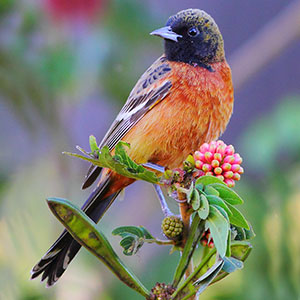
U.S./Canada Population Estimate: 10,000,000
Population Trend: Decreasing
Habitat: Open woods and brush
Threats: Habitat loss, brood parasitism
Note: The smallest of North American orioles, Orchard Orioles have a noted tolerance for other birds. In areas of favored habitat, multiple Orchard Oriole pairs will sometimes nest in a single tree. They are also known to nest in close proximity to Baltimore Orioles, American Robins, and Chipping Sparrows, among others. Orchard Oriole populations have decreased 23 percent over the last 50 years. |
Scott's Oriole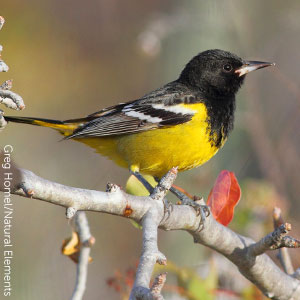 U.S. Population Estimate: 1,600,000
Population Trend: Decreasing
Habitat: Varied open, arid habitats
Threats: Habitat loss and fragmentation
Note: Although most birds avoid eating Monarch butterflies due to toxins ingested by the milkweed-eating insects, Scott's Oriole and several other bird species have learned to prey upon them by eating the abdomens of less-noxious individuals. Populations of the Scott's Oriole have decreased by 29 percent over the last 50 years. |
Spot-breasted Oriole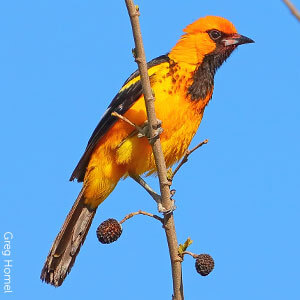
U.S. Population Estimate: Unknown
Population Trend: Increasing
Habitat: Lushly planted suburban areas in South Florida
Threats: Severe winter freezes, habitat loss and fragmentation
Note: Native to southern Mexico and Central America, Spot-breasted Orioles were introduced in the U.S. more than 70 years ago. The birds are now found in areas between Miami and West Palm Beach. They nest in human-altered landscapes with an abundance of flowering and fruiting ornamental trees and shrubs, including suburban yards and golf courses. |






































